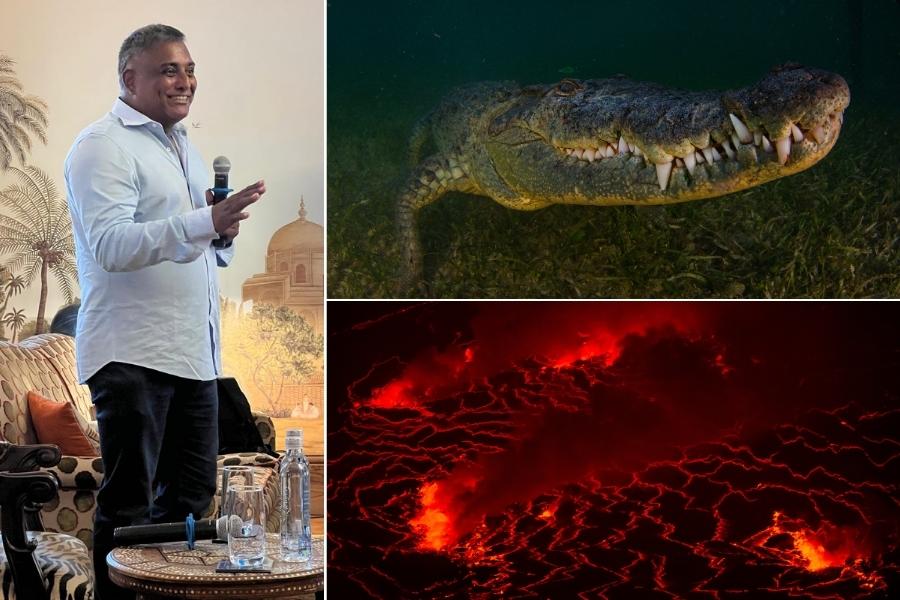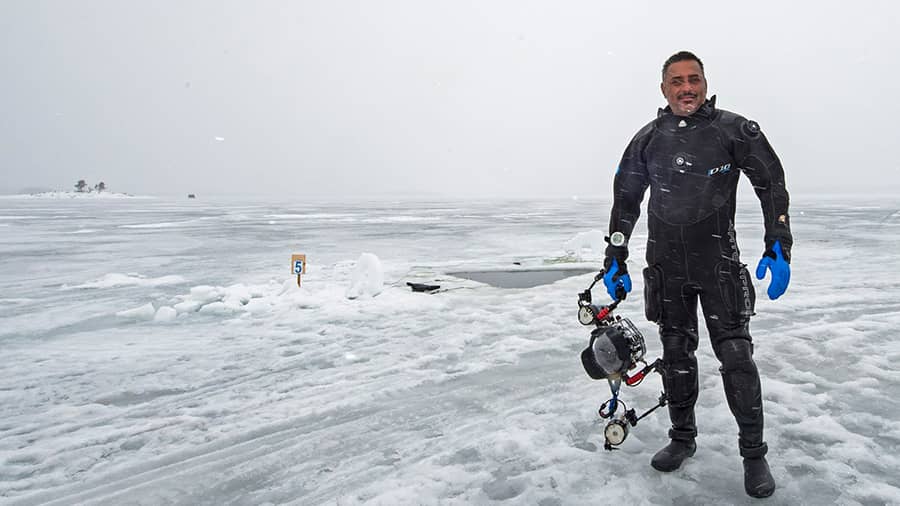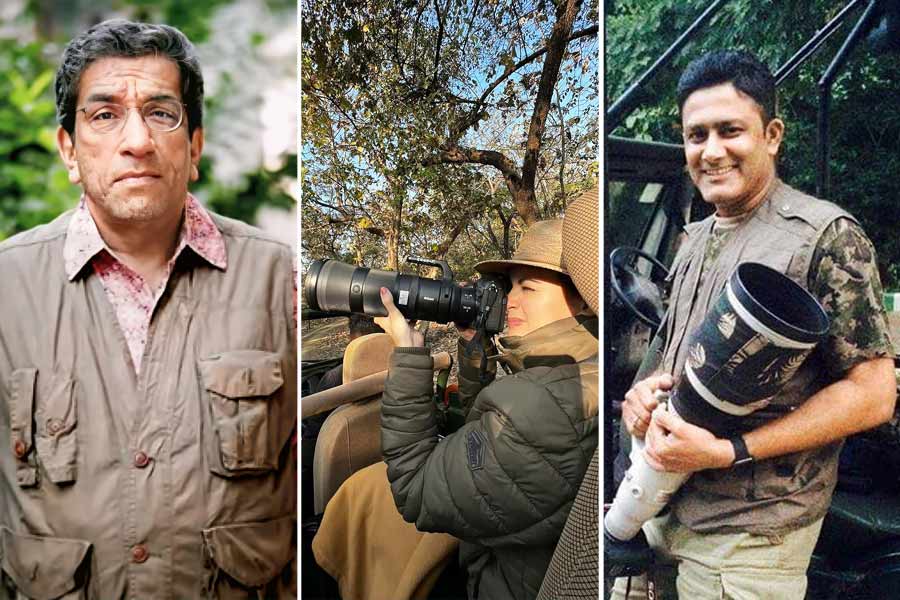From chasing the elusive snow leopard in the Himalayas to climbing an active volcano in Congo and exploring the frozen depths of Lake Baikal in Siberia, Dhritiman Mukherjee believes in being one with nature.
The award-winning nature and wildlife photographer gave the audience at The Glenburn Penthouse a peek into his close encounters of the wild kind at a session hosted by the Kolkata International Women’s Collective (KIWC) on July 2 as part of its Monsoon Ball fundraiser.
“I’m more comfortable in front of animals than humans,” Mukherjee joked at the start of the session, before leaving the audience spellbound by stories of work, philosophy, travels, and conservation efforts.
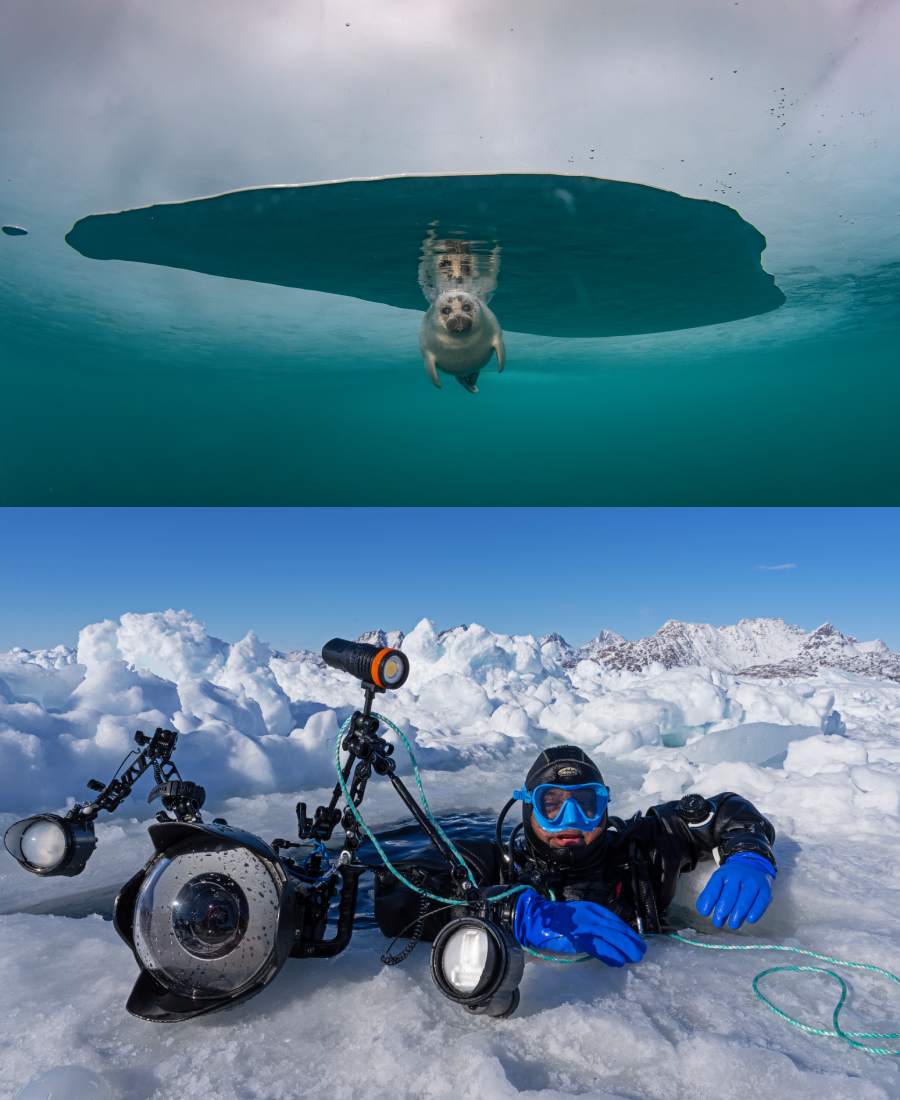
Mukherjee spent hours under the ice-clad Lake Baikal to get the perfect shot of Nerpa Seals — the only species of freshwater seals on earth (Image courtesy Dhritiman Mukherjee)
Incredible India
As a wildlife photographer deeply committed to conservation, Mukherjee has always urged everyone to discover their own country first. “We travel all over the world, but what we don’t realise is that all species are available across India. Take, for example, our 7,000 km coastline, it is an incredibly biodiverse ecosystem that is home to more than 10,000 species,” he explained.
From chasing the snow leopard near the frozen Zanskar River in Ladakh, to staking out rare ducks in the wintery waters of the Brahmaputra, to sleeping atop trees on Narcondam Island in search of a rare hornbill — Mukherjee stressed that one can find every species of animal right here in India.
India’s exceptional biodiversity, with its wide range of flora and fauna, makes it a ‘mini-world’. Similarly, West Bengal can be called ‘mini India’ because of its diverse geography stretching from the Himalayan foothills to the world’s largest delta.
But Mukherjee’s adventures in India haven’t been without challenges. “Sometimes there have been issues relating to logistics and bureaucracy,” he said.
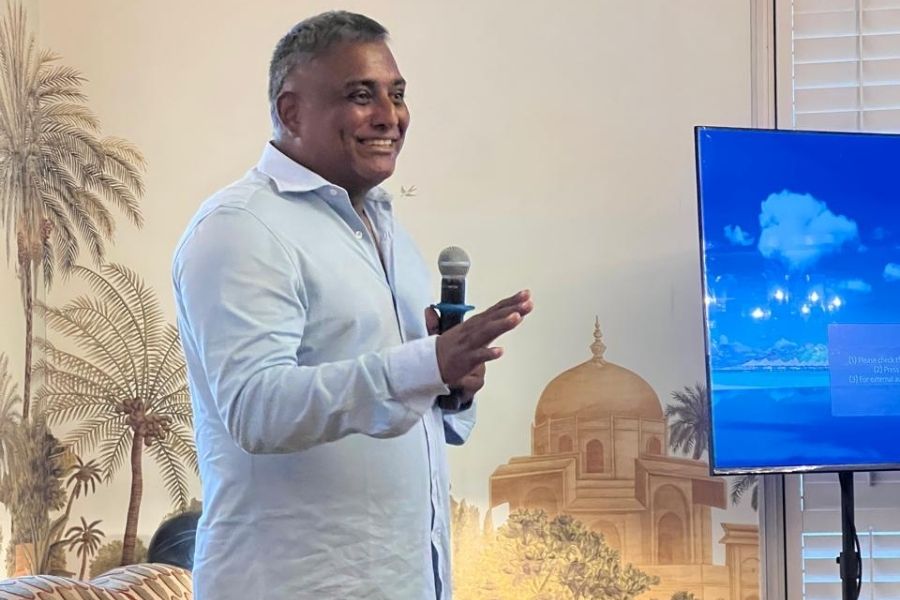
Mukherjee shares a light moment with the guests at Glenburn Penthouse
“But I tackled them by travelling with local fishermen,” he recalled, sharing an anecdote from his time in Vizag. “I could’ve been jailed by the Coast Guard — it was illegal!” said Mukherjee, the only person permitted to dive in the Sunderbans.
Nothing can come in the way of Mukherjee’s passion for documenting lesser-known species in India — not even illness. “I once spent three days in a cave in Meghalaya in search of a tortoise species thought to be extinct. I suffered a lung infection, but when we found the tortoise jutting its head out of its shell, it was worth it,” he said with a smile.
Humility, an important virtue
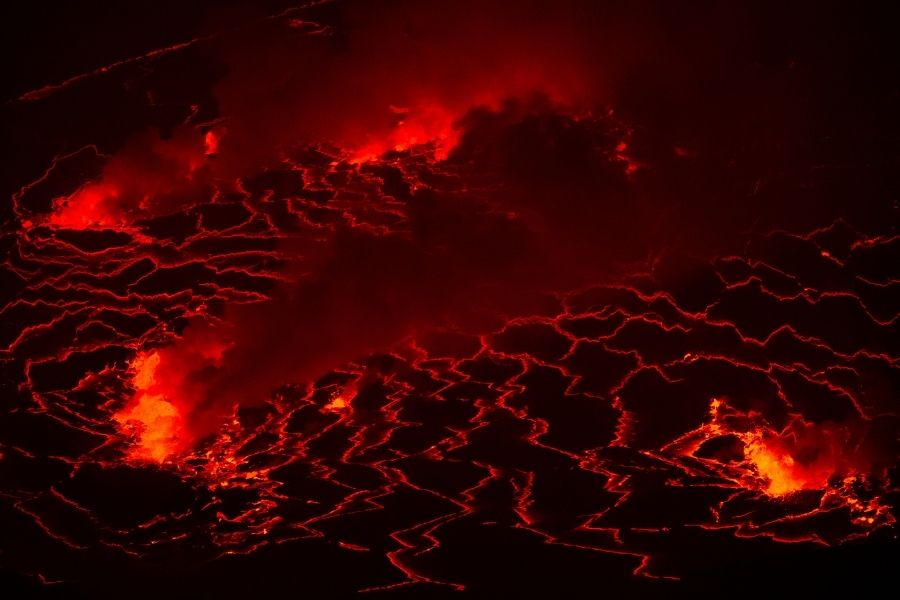
Mukherjee and his team flew past one of the world's few volcanoes in Congo (Image courtesy Dhritiman Mukherjee)
Despite having innumerable accolades to his name, including the Carl Zeiss Conservation Award and the RBS Earth Hero Award, Mukherjee doesn’t consider himself an “authority” on wildlife photography. “I share whatever I experience,” he said.
In an age of “personal branding” and people striving to be the smartest in the room, Mukherjee offers a different perspective. “It’s a common tendency to exaggerate the difficulty of a situation and then focus on how ‘I’ tackled it. But that’s not at all true,” he said with conviction. “Wildlife photography has taught me that it’s not always about the thrill — it’s about the knowledge. If what I do can change how people see animals and help in their conservation, then I consider my work done.”
For Mukherjee, the goal is not to talk about himself or his achievements, but to share what he sees. "Wildlife photography is such a beautiful field because you learn something new everyday," he said.
Man and wild, not versus
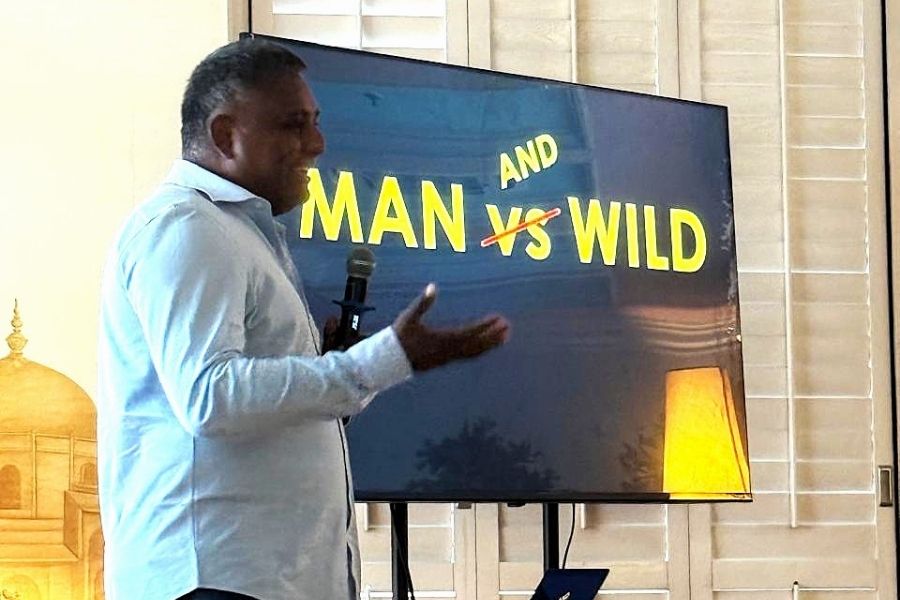
A firm believer in peaceful coexistence, Mukherjee says we share our planet and its resources with other species, not against them
A firm believer in the equality of species, Mukherjee doesn’t agree with wildlife shows that pit man against wildlife. “That’s not how it is. We share the same space; we are part of the same ecosystem. In fact, if we weren’t on this planet, every species would probably survive. But if some species weren’t here, we wouldn’t survive — we need them more than they need us,” he added. For Mukherjee, no species is inherently dangerous; it’s the situation that makes it so.
How does he keep himself safe when interacting with dangerous species? "Knowledge about the species, the space, respect and a little common sense," are his go-to.
India's conservation culture
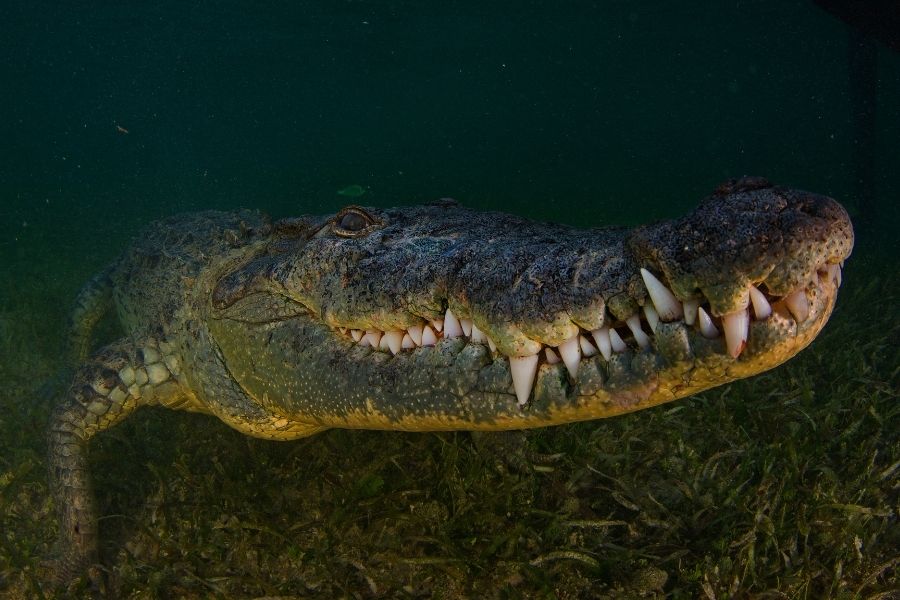
Photographing crocodiles and alligators needs patience and persistence. Mukherjee has, at times, spent days camouflaged, waiting for the perfect shot (Image courtesy Dhritiman Mukherjee)
The passionate photographer concluded the session by highlighting India’s deep-rooted culture of conservation. “One important thing people in India need to understand is that we have always had a culture of conservation,” he said. “Think of our villages, families with poor infrastructure and limited means are often seen caring for animals, whether domesticated or not. This is something you’ll find across the country.”
“With just 5 per cent of our land under protected areas, India’s tremendous biodiversity survives because we have culturally protected a wide variety of species,” Mukherjee said.
Sheer will leads to twist of fate
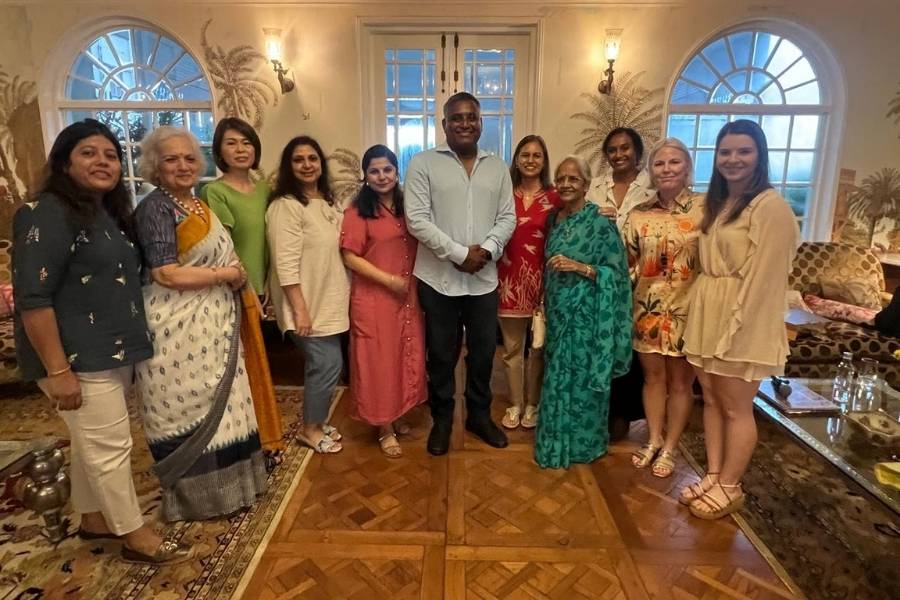
Mukherjee with the members of Kolkata International Women's Club after the session
For Mukherjee, wildlife photography wasn’t something he stumbled upon by chance. "I decided to be a wildlife photographer in 2000. I can't believe it's been 25 years since then," he reflects. "Back then, I didn't have a role model to look up to. I liked photography, I liked animals — that was it," he adds. When Pradyumna 'Paddy' Manot of AMPM asks what it takes to pursue this path, Mukherjee doesn’t sugarcoat it: "Oh, it’s tough! If you’re willing to live a decade in destitution, only then should you even think about it."
"Of course, my expeditions require large sums of money to make them happen. But you have to be ready for every aspect of this career," Mukherjee smiled as he wrapped up the session.
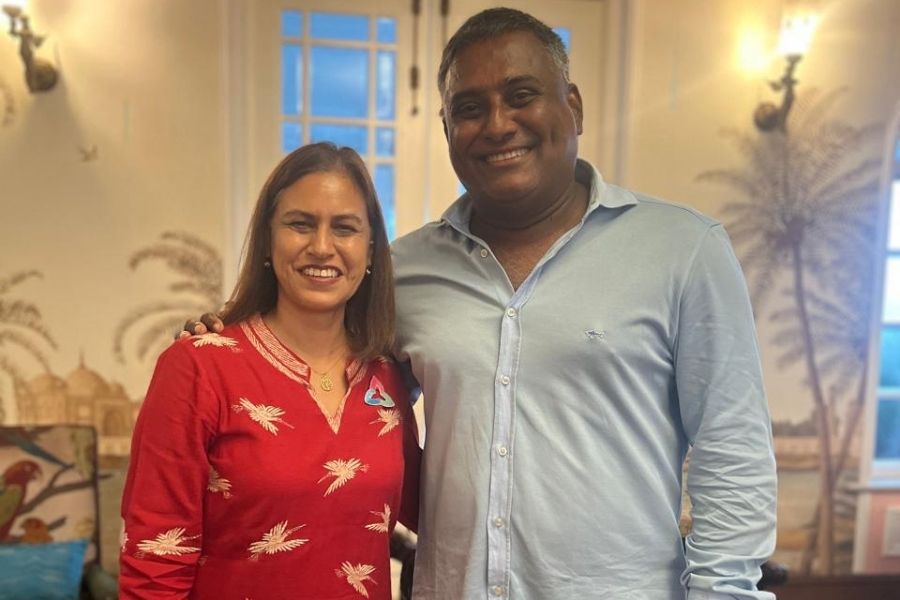
The evening ended with roaring applause for the decorated lensman, followed by high tea. "We felt really honoured and privileged to have Dhritiman's time since he was in the city for only 24 hours. He is such an inspirational speaker not only because of his photographs but about the message that he shares with the world about the reason stories need to be told about these wonderful animals and their relationship with human beings," said Husna-Tara Prakash, owner of The Glenburn Penthouse and Estates.
